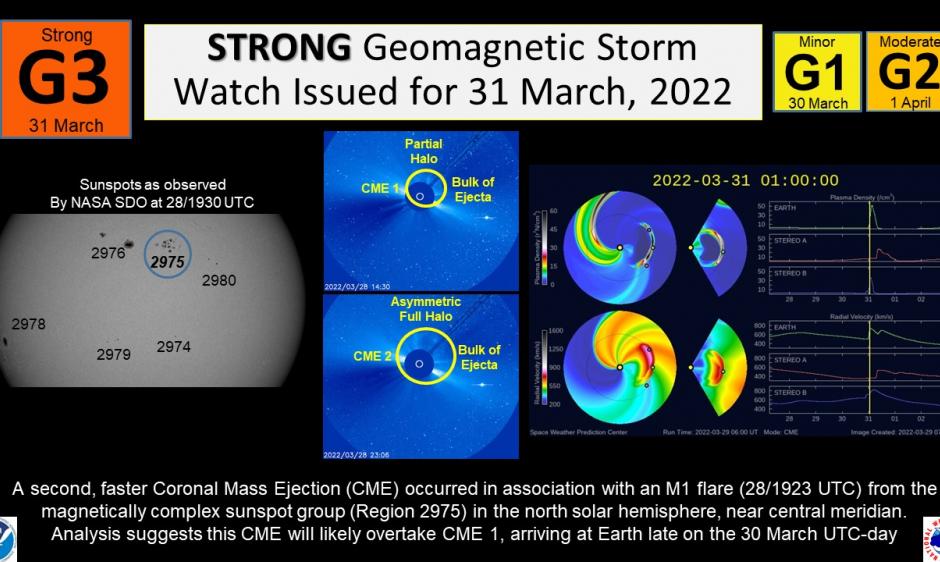
A G3 (Strong) geomagnetic storm watch is now in effect for 31 March, 2022. A second, faster Coronal Mass Ejection (CME) erupted later on 28 March associated with an M1 flare at 3:23 pm EDT (1923 UTC). Analyses indicated the CME speed as approximately 841 km/s, and model guidance suggests this CME will overtake the day’s earlier CME and arrive during the early evening of 30 March into early morning of 31 March (EDT). Forecast confidence of an Earth-directed component is good, with moderate confidence of timing and intensity. Additionally, a G1 (Minor) watch is in effect for 30 March, 2022, for likely effects of initial CME shock arrival and a G2 (Moderate) watch is in effect for 1 April, 2022, in anticipation of continuing, but weakening, CME influences. When the CME approaches Earth, NOAA’s DSCOVR satellite will detect the real-time solar wind changes and SWPC forecasters will issue any appropriate warnings. Impacts to technology from a G3 storm generally remain small, but it can drive the aurora further equatorward of its polar home. Aurora may be visible over the northern tier states if the conditions are favorable. For additional information, visit our phenomena pages at space weather, geomagnetic storms, CMEs, and aurora and viewing tips. NOAA's Space Weather Prediction Center is the official source for space weather forecasts, watches, warnings and alerts. Visit www.spaceweather.gov for updates. Learn about Solar Cycle 25.